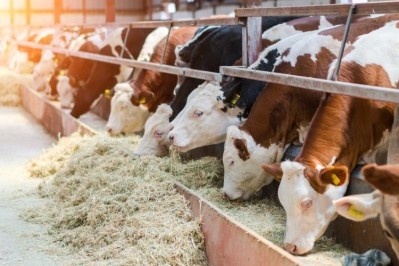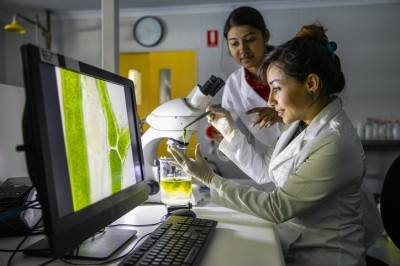Circularity: what are the consequences for the feed sector?

In the last few years, the topic of circular food production systems has come to the fore. In the Netherlands, for example, The Dutch Ministry of Agriculture, Nature, and Food Quality is basing its future agriculture policy on circularity principles, and is supporting work in this area, including the Feed4Foodure initiative - a public-private partnership between Vereniging Diervoederonderzoek Nederland (a Dutch association for animal nutrition research) and Wageningen University & Research.
Two researchers from this project have authored a paper investigating the implications of circular food systems for the feed sector.
“Over the last few years, we have been thinking about the future of the animal feed sector and the concept of circularity and what it could mean for the feed industry in terms of ingredient use and consequences for the animals,” Dr Alfons Jansman, senior animal nutrition scientist at Wageningen Livestock Research and co-author of the paper, told FeedNavigator.
The researchers defined a circular system as one in which arable land is primarily used for food production while farm animals receive diets based on crop residues, co-products from the food industry, grass from lands unsuited for food production, and food waste - collectively named ‘low opportunity cost feed materials’ (LCF.)
Published in the journal Animal, the review concluded that “such diets have a lower starch and energy content, and a higher protein, fiber and phosphorus content than commonly used diets” and that this “has consequences for feed intake, digestive processes, the microbiome in the digestive tract, and type and availability of nutrients for the animal.”
The paper also suggested that an increased use of LCF “may limit the use of presently used criteria for the efficiency of animal production and nutrient utilization.”
Nutritional comparisons
The researchers summarized the nutritional profile of various common co-products. They found that in comparison to cereal grains, the starch content in the cereal co-products is lower, while the fractions of protein, non-starch polysaccharides (NSP) and lignin are larger. Moreover, the net energy content is lower.
Maize distillers dried grain with solubles (DDGSs) has a high net energy content due to the high-fat content, but the researchers anticipated that as ethanol production is increasingly combined with oil extraction, this will result in distillers grain with a lower fat and net energy content.
By-products of oil extraction, such as rapeseed meal, sunflower seed meal and palm kernel meal have a lower protein content and higher fiber and NSP content than soybean meal and consequently a lower net energy content and amino acid digestibility.
While many of these products are already included in animal nutrition, these diets usually contain a substantial proportion (50% or more) of cereal grains, and the precise nutritional profile of feed formulations is tightly controlled.
“There are a number of constraints imposed on the diet in terms of maximum inclusion levels of certain feed ingredients - if more co-products are to be included in animal diets, maybe we have to lift these constraints,” said Dr Jansman.
To illustrate and explore the consequences of removing grains from the diet, the researchers formulated pig and poultry diets using least-cost feed optimization.
The researchers noted that the reduction of human-edible feed materials in animal diets may result in a decrease in energy and nutrient density and starch content and an increase in crude protein, crude fat, fiber, and protein content.
“One of the points we are seeing is that if you use more by-products and lower the starch content, the energy level in the animal’s diet can become more critical,” said Dr Jansman.
He said that the easiest way of compensating for that is to include more fat, as raising the protein fraction would mean losing nitrogen efficiency.
The alternative, he said, is accepting diets with a lower energy density, and accepting that this could affect the growth of the animals.
The Feed4Foodure project has recently conducted trials looking at the impact of LCF-based diets on monogastric animals and is in the process of evaluating the results. Dr Jansman said a report would be published in the public domain in six months, but that an initial “glimpse” at the results suggested that “the animals are capable of dealing with more extreme diets than we thought.”
Challenging convention
It could be that it is not the animals that have a problem with LCF diets, but the conventions that prevail in a system that prioritizes growth efficiency.
The researchers wrote: “In the context of a circular food system, some classical paradigms need to be re-evaluated. For example, the use of feed conversion ratio as a criterion of nutrient efficiency may become less relevant, while other criteria to assess the net contribution of feed ingredients to the human production food system are required.”
But if, as the researchers suggest, FCR is of limited use in a circular food system, what system should it be replaced by?
Dr Jansman said that moving to a circular approach would entail pulling back on efficiency at an animal level and looking at the system as a whole and at efficiency as a “higher level concept.”
“The resources - how much phosphorus and water are required to produce the food - for example, could become the new criteria to evaluate whether a concept is circular. It is about viewing animal production as part of a bigger food system.”
Dr Jansman emphasized that this is not a concept that is going to replace current systems in the next few years and is very much “high level thinking.”
“This is not for formulating diets for today and tomorrow - it is something to consider and explore for the years ahead and prepare us for future discussion about the role of animal nutrition in feeding the world. We have to prepare ourselves for a future where governments and society, in addressing issues such as climate change, will take decisions that will affect animal feed sector,” he said.
Source: Animal
Review: Composition and utilization of feed by monogastric animals in the context of circular food production systems
Authors: P. Bikker, A.J.M. Jansman













